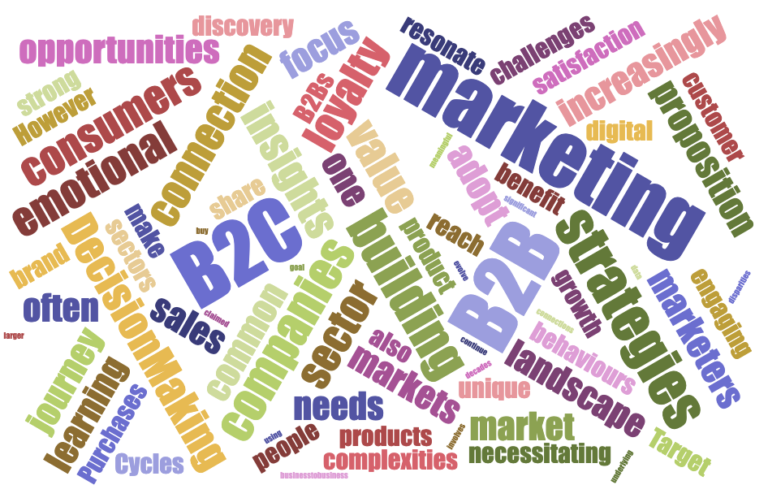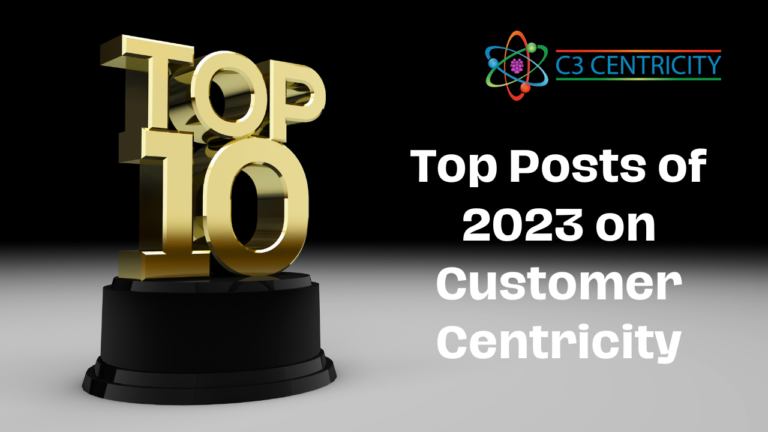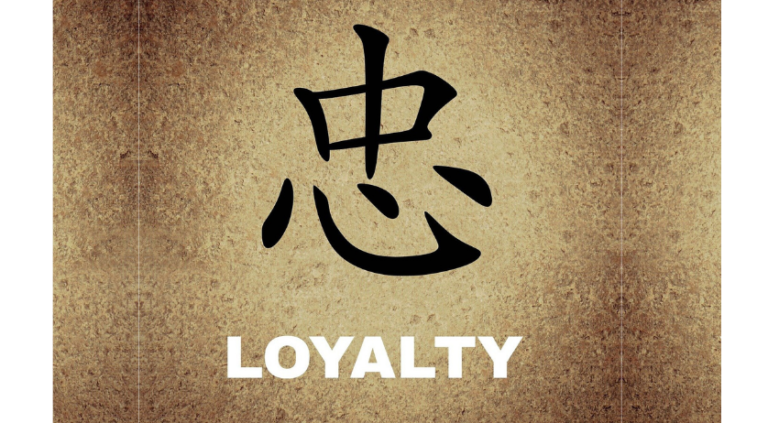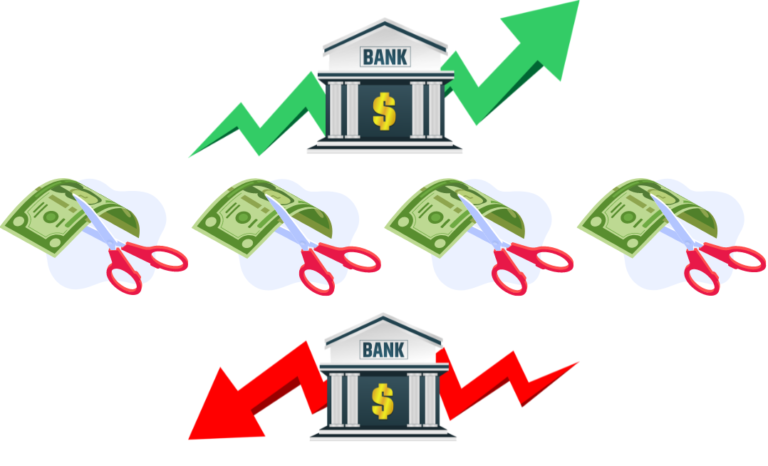[vc_row][vc_column][vc_column_text css=””]
I know, you probably don’t want to read yet another article about the post-pandemic era. But bear with me; this is about customer connection and engagement.
Since covid, people have changed their perspective on many categories. They have also adapted their purchasing behaviour following lockdown. So this seems to be the perfect time to reconsider our customer-first strategies, doesn’t it?
Up until the covid-19 virus infected the globe, almost every single organisation, big or small, recognised the importance of satisfying their customers. However, most of them were only giving lip service to customer-centricity. Very few were actually going beyond voicing their opinions.
So I have some bad news if you are in this first group and it’s this. Not actioning a customer-first approach in everything you do is no longer an option. You were be called out, most probably very publically online. Customers are sharing their experiences of companies and brands far more than they were doing before the pandemic.
It makes sense. What else did we have to do than surf the internet all day long? And this habit seems to have remained. According to the latest global statistics, back in 2020, the average consumer spent 474 minutes a day on digital media. By 2023, that number is predicted to rise, according to the experts, to 500 minutes on digital media.
Taking a closer look at social media use trends, business owners and marketers can learn a great deal about opportunities to boost engagement and business impact as the new norm continues to evolve.
The article by Business.com lists four things consumers are looking for:
- They want to be entertained – understandable when you consider how much time they are spending online.
- Unlocking creativity – they are not only consuming content, but they are also creating it in larger quantities than ever before.
- They want connection and comfort – people are desperate to overcome their isolation and connect with others, so online multiplayer gaming and chat have surged.
- They seek positive content to cheer them up – it’s a natural human response to seek uplifting, inspirational content during difficult times.
If I were to sum up these four desires, I would say that people are looking for more connection and engagement. Exactly what a customer-first strategy provides! But there are things to avoid.
When an organisation decides to become more customer centric, there are many mistakes that are commonly made. This article “7 Reasons for Failure When Adopting a Customer First Strategy” gives the main ones and makes a complementary read to this post.
But today’s world has accelerated the upward trend of the importance of a customer-first strategy and makes it one of the most, if not the most important one for all
organisations
.
It is no longer the norm, or even the new norm, of successful businesses. It is becoming the make-or-break criteria for surviving the post-pandemic era.
And many companies are already falling behind – fast! It should, however, be noted that for many retailers, the pandemic has only sped up their likely demise and appearance in bankruptcy courts. For more on this, I suggest you read “As pandemic stretches on, retail bankruptcies approach highest number in a decade.”
While retail is clearly suffering as purchases in lockdown went online, it is not the only industry to have been hit hard. Another CNBC article highlights others, including cruises, fitness centers, energy and airlines.
Whether or not these too were headed downwards or not, customers hold the key to success more than ever before, as their spending becomes less impulsive. The 20 biggest companies that have filed for bankruptcy because of the coronavirus pandemic are listed in this article on Forbes.
Enough research has been done to prove that the return on a customer-first strategy is significant. Here are just a few of the statistics I have found.
- 86% of buyers will pay more for a better customer experience. But only 1% of customers feel that vendors consistently meet their expectations. CEI Survey
- 89% of consumers have stopped doing business with a company after experiencing poor customer service. RightNow Customer Experience Impact Report
- Walker forecast that by 2020, customer experience will overtake price and product as the key brand differentiator. Customers 2020 Report
- A 10% increase in customer retention levels result in a 30% increase in the value of the company. Bain & Co
- 94% of consumers say they are more likely to be loyal to a brand that offers transparency. Label Insight
These are numbers that would make any CEO sit up and take notice! But will it make them act? What’s holding them back from investing in their customers rather than (just) in the products and services they offer?
I believe that this data can no longer be ignored. It’s time every CEO started initiating a move to a more customer centric organization. NO more excuses; this has to be (OK, one of) your top priorities!
If you’re ready to put your customers first, then C3Centricity can help. We will inspire your team, no matter where in the world you operate. Contact us today for a complimentary advisory session.
Marketers are too busy building brands
With so much information available today, marketing is being challenged to demonstrate its ROI. This might explain why they are still putting their efforts into brand building, sometimes to the detriment of engagement with their customers, consumers and clients.
However, an analysis run by IBM on research carried out in the UK last year by the Callcredit Information Group gives a different reason. They found that the majority of marketers are feeling overwhelmed by all this data. Their explanation for this is that:
“Only 29% of marketers believe they have the necessary skills to analyse data, with 44% planning on investing in further training over the next two years to boost confidence within their organisations around the handling of information.”
According to a Forrester report, 44% of B2C marketers are using big data and analytics to improve responsiveness to customer interactions. But of equal importance in terms of top two mentions, is the desire to generate insights. ( Source)
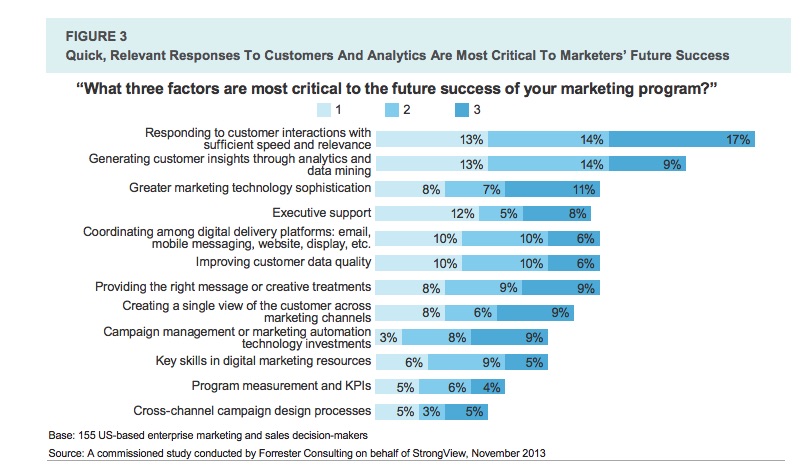
It saddens me that despite the constant flow of data into companies they still lack insights into customer connection and engagement. As I’m often quoted as saying:
“We’re drowning in data but thirsting for insights.”
Marketing is clearly so busy using data to manage pricing, distribution and their communication channels, that they are not using the information to get to know their customers better. This conclusion is confirmed by a Forbes article mentioning that marketing is using big data to answer “which content is the most effective, how to increase conversion rates and customer lifetime value.” It would be good to use it to increase satisfaction and loyalty, right?
Big data has actually done customer understanding a disfavour since organisations are hardly increasing their spend on market research according to ESOMAR’s latest industry figures. The industry grew a measly 2.1% in 2018, once again confirming that there continues to be no “significant” growth recorded in the past seven years! Compare this to the more than 4-6% increases recorded for ad spend over the past five years.

But there is some hope. A recent report from OnBrand Magazine on the KPIs used by marketing showed that Marketers are using a variety of metrics to measure the impact of their brand marketing activities.
In surveying more than 560 global brand managers and CMOs, the analysis concludes that new customer acquisition (75%) and social media engagement (72%) are the two primary ways they determine the success of their brand marketing efforts.
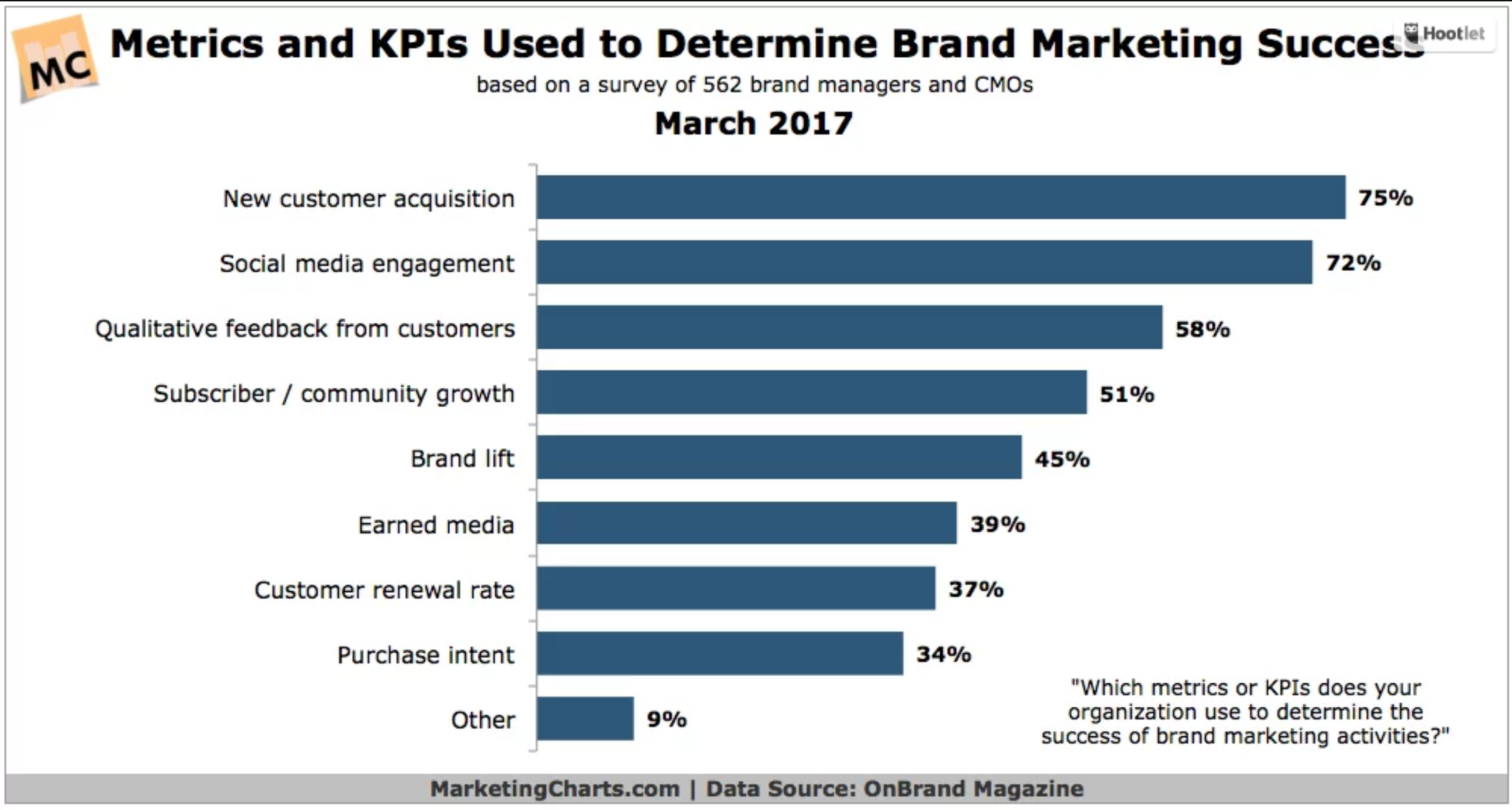
This may not be the full solution, but it is certainly a start in customer connection and engagement!
However, there is still a lot of room for improvement. A 2016 Spencer Stuart survey shows data analysis and insights are one of the three main areas where CMOs need the most development as a leader.
Unfortunately, they are also the skills that more than half say are most difficult to find when building a team!
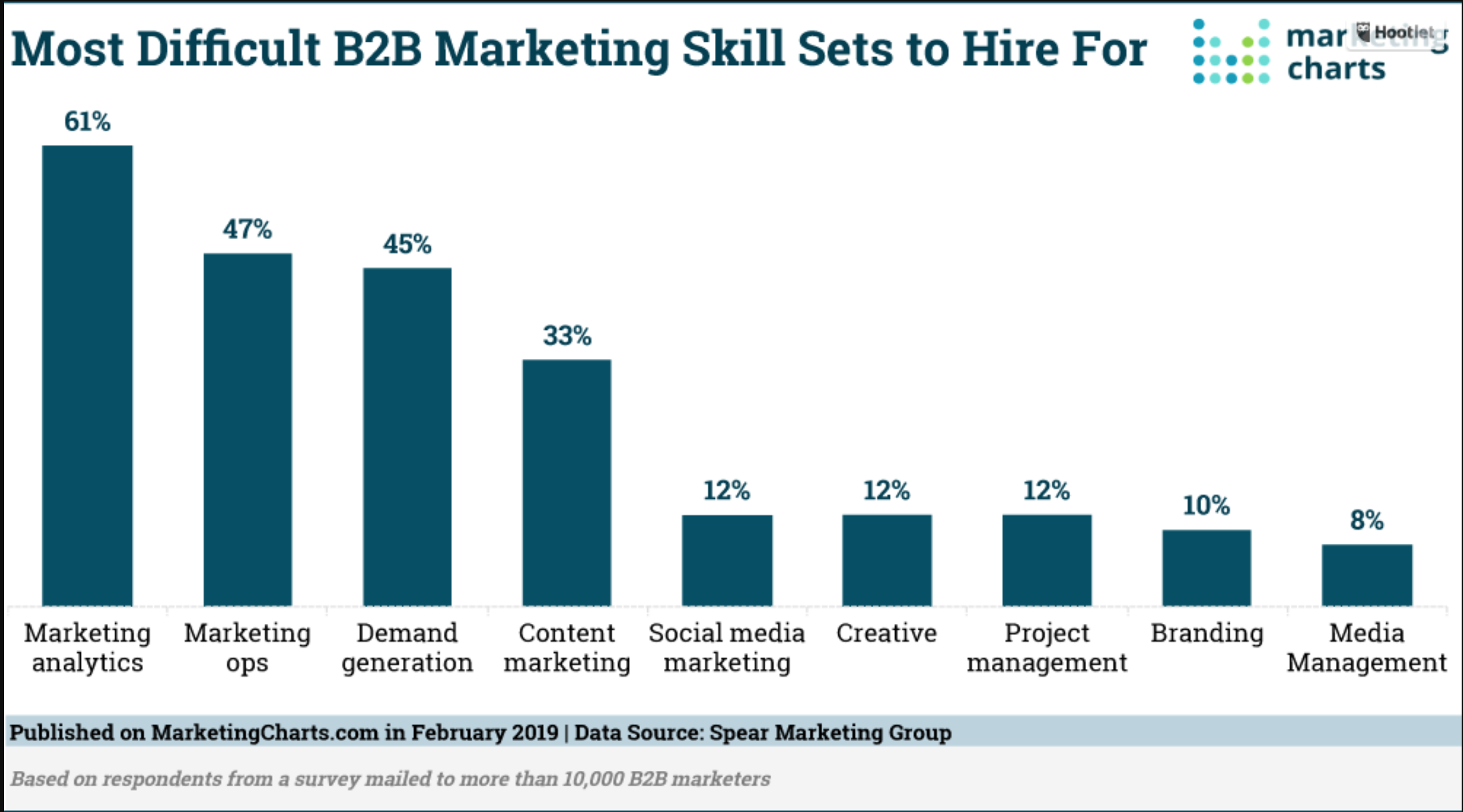
So if CMOs can’t develop insight about their customers, shouldn’t market research be more not less important to them? After all, it’s the one profession which spends its whole time trying to understand the market and customers. So what’s going wrong?
Market research is seen as a cost, not an investment
Companies still need market research to understand their customers and improve the connection and engagement of their customers.
Yes, a wealth of information is flooding into organisations with the IoT, but those numbers don’t tell you their “why.” That’s where market research comes into its own. It needs to provide more “why” answers and not just the mere statistics they seem comfortable dropping on the laps of executives and marketers alike.
I believe that (a large?) part of the issue is also the researchers themselves. They’re not sociable, speak a language others don’t understand and seem afraid to voice their own opinion, let alone make recommendations.
This was confirmed in The Vermeer Millward Brown Insights 2020 research. It clearly showed the advantages of a senior market research position at the board level. But to get there, the majority of researchers need new skills.
The critical capabilities that highlighted the biggest differences between leaders and laggards were in business acumen, creative solution thinking, storytelling and direction setting.
It seems a real pity to me that the very people who should benefit from the explosion in data availability are not profiting from it. As if their needed analytical skills are not enough, there is also a real opportunity for them to lead the customer-first strategy in many organisations.
Customer services are seen as complaint handlers not engagement specialists
When I was first hired to head up the global consumer excellence division for Nestle, I found a group of siloed departments which rarely shared information. Even worse, the customer care centre was seen as mere complaint handlers. Their image was of a group of women who spent their days on the phone talking to other women!
I don’t think Nestle were the only ones who had this image at that time. And sadly I still find similar perceptions in many organisations which become my clients through a desire to make the much-needed changes.
You only have to take a look at the financial results of companies which excel at customer care to realise the business benefits of putting the customer first: Amazon, Southwest, Zappos to name but a few.
An excellent article by Shep Hyken called “Ten Customer Service Tips for Customer Loyalty Month” details the essentials of a forward-thinking customer-first strategy and what it means today. Even if it is now quite old, I still believe the article is of immense value, which is why I mention it here. In the post, he mentions that
“According to Forrester, 72% of businesses say that improving the customer experience is their top priority. A study from NewVoiceMedia indicates that companies lose more than $62 billion due to poor customer service. No company can afford to be a customer service laggard.”
The Forrester report from which Shep quotes was from an ongoing analysis that has been run each year since 2010. The key findings from the 2016 report showed:
- In all five sectors they covered, companies with higher customer experience (CX) scores outperformed their rivals in revenue growth
- CX leaders showed an annual growth rate of 17% compared to just 3% for the others.
- The cable and retail industries beat the field in CX by 24% and 26%, which is a huge boost to the bottom line.
- Even in the sector with the smallest range (airlines), there was a 5% difference between companies.
- This also translated into subscriber growth – in the cable industry leaders grew internet subscribers by 23.9% more than others and video subscribers by 13.9%
Along with the previously mentioned statistics, I can see no reason for a company not to invest in a customer first strategy. If you can think of any yourself, then I’d love to hear them in the comments below.
In conclusion
Are you ready to adopt a customer-first strategy? If so, then check out our website for more tips and answer our free assessment: https://c3centricity.com. Upon completion, you will receive a detailed report showing you what to do to improve and prioritise your actions.
[/vc_column_text][/vc_column][/vc_row][vc_row css=”.vc_custom_1756213384715{padding-bottom: 20px !important;background-color: #F2F2F2 !important;}”][vc_column width=”1/2″][vc_custom_heading text=”Customer-First Challenges” font_container=”tag:h3|text_align:left|color:%231E73BE” use_theme_fonts=”yes” css=”” link=”url:https%3A%2F%2Fc3centricity.com%2Fcustomer-first-strategy-challenges%2F”][/vc_column][vc_column width=”1/2″][vc_custom_heading text=”CEO Strategies” font_container=”tag:h3|text_align:right|color:%231E73BE” use_theme_fonts=”yes” css=”” link=”url:https%3A%2F%2Fc3centricity.com%2Fcustomer-centric-strategies-ceo-growth%2F”][/vc_column][/vc_row]


